New changes in the domestic context under the impact of global trends
Under the impact of global trends, the domestic context witnessed changing trends with both opportunities and challenges, creating a turning point for building Vietnam's national image.
Firstly , the restructuring of the world situation opens up the process of reshaping Vietnam's international position. The US-China competition opens up great opportunities for Vietnam. With its strategic geopolitical position, Vietnam is both an important partner of both powers and must maintain a balance to protect national interests. Taking on the position of ASEAN Chair 2020, Vietnam has effectively managed the control of the COVID-19 pandemic, maintained regional cooperation and promoted joint initiatives, thereby strengthening the image of a proactive, responsible and trustworthy country (1) .
The changes in the international situation have created conditions for Vietnam to affirm its role, enhance its prestige and reshape its international position. This process is associated with changes in the Party's foreign policy thinking: from international integration (11th Congress), raising the level of multilateral foreign affairs (12th Congress), to establishing macro-development goals and rising strongly (13th Congress). Accordingly, by 2030, Vietnam strives to be a developing country with modern industry and high average income; by 2045, it will become a developed country with high income (2) . On this issue, domestic policymakers and scholars have discussed the trend of establishing the status of a middle-class country, considering this a strategic orientation suitable for the "position" and "strength" of the country at present and in the coming period (3) .
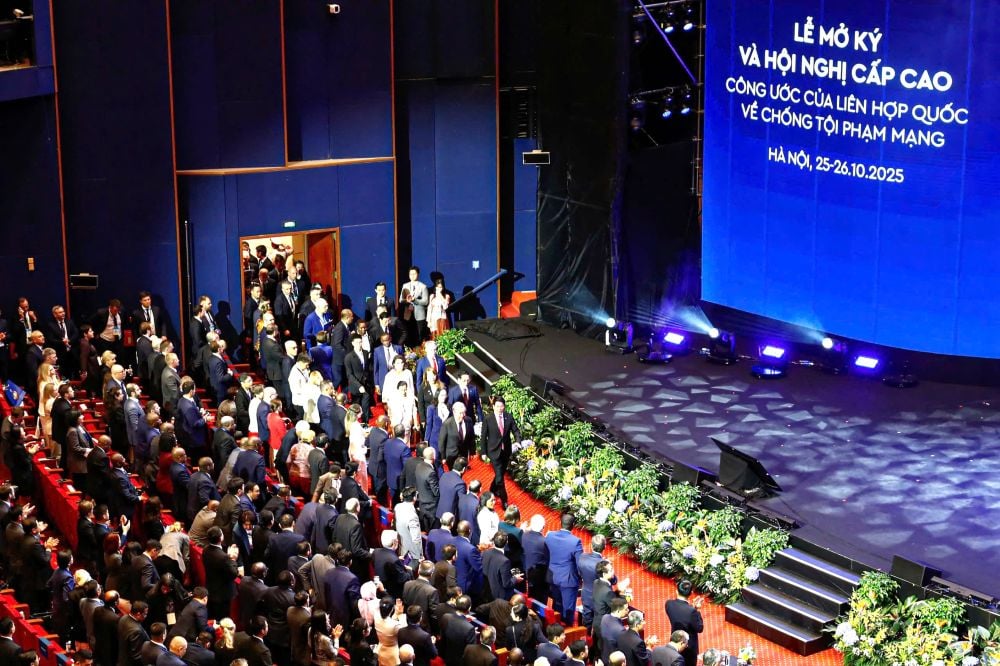
Second , the shift of the world economic center to Asia creates momentum for sustainable growth, making Vietnam emerge as a dynamic economy and an attractive destination for foreign investment (4) . Its geostrategic location helps Vietnam participate deeply in the Fourth Industrial Revolution, promoting sustainable development, greening and digitalization (5) . The restructuring of the global supply chain, stemming from the US-China trade tensions, opens up opportunities for Vietnam to attract multinational corporations to shift their investment and production. However, to effectively take advantage of this opportunity, Vietnam needs to ensure economic autonomy while perfecting its national governance system in a modern direction, capable of adapting to the requirements of the digital economy and global trade.
Over the past decade, Vietnam has maintained an average gross domestic product (GDP) growth rate of over 6% per year, with GDP reaching 476.3 billion USD, ranking 4th in ASEAN, 33rd globally (2024) (6) . Import and export have increased sharply, economic and trade relations have expanded with more than 230 partners (7) , and competitiveness has increased the fastest in the world (8) . Thanks to that, the national image has been strengthened with brand value increasing by 102% (2019 - 2023) (9) .
On the other hand, economic development creates a solid foundation for Vietnam to build its national image - a factor that has previously encountered many difficulties due to limited resources. However, Vietnam still faces the challenge of increasing per capita income, increasing value in the supply chain and avoiding falling into the "middle-income trap", requiring a transformation of the growth model, enhancing technological capacity and improving people's lives to maintain the image of a strong economy.
Third , the strong revival of Eastern civilization contributes to promoting the awareness of preserving and promoting the Vietnamese national identity. The cultural achievements of China, Japan, Korea, and Thailand in recent years have not only brought economic benefits, but also encouraged pride in Eastern culture, of which Vietnam is a typical representative.
In the past, despite its rich history and culture, the lack of attention and investment in culture has had a negative impact on Vietnam's image in the international arena. The cultural revival process poses a challenge to balance the preservation of tradition and the acceptance of modernity. Therefore, the development of digital media has created conditions to enhance international recognition of a Vietnam with a rich cultural identity.
Fourth , the emergence of global non-traditional security issues creates opportunities for Vietnam to form a new awareness of national development and governance. As a country facing many challenges such as climate change, food security, water security, cyber security or the COVID-19 pandemic, these issues not only affect economic growth, but also threaten social stability and sustainable development.
Faced with the above challenges, Vietnam has adjusted its thinking on national development and governance. From the 10th to the 13th National Party Congress, non-traditional security has been emphasized with specific solutions such as strengthening sustainable governance and proactive response; economic development associated with environmental protection and social security; reforming governance models towards modernity, promoting digital transformation and enhancing international cooperation to respond to common challenges. During the COVID-19 pandemic, Vietnam effectively controlled the epidemic and actively provided international support, consolidating the image of a proactive and responsible country in global governance.
Notably, the increase in non-traditional security issues has affected the image of a green and sustainable Vietnam, reducing its attractiveness to tourists and investors, but opening up opportunities for Vietnam to renew its image. The Party and State identify agriculture as a national advantage, determined to build Vietnam into an "agricultural power" and a "food power". If well utilized, Vietnam can both ensure national food security and enhance its international image.
Fifth, along with the wave of global digital revolution, Vietnam is rapidly accelerating national digital transformation. Digital technology helps expand public services, develop e-commerce and improve economic efficiency, but also poses challenges such as the risk of cyber attacks, digital inequality and job loss (10) . In addition, dependence on social media and digital devices affects social relations and traditional values, raising warnings about the decline of social ethics or lifestyle conflicts between tradition and modernity (11) .
In that context, Vietnam issued a series of policies such as Resolution No. 52-NQ/TW, dated September 27, 2019, of the Politburo, "On a number of guidelines and policies to proactively participate in the Fourth Industrial Revolution", National Strategy on the Fourth Industrial Revolution to 2030, National Digital Transformation Program to 2025, orientation to 2030, aiming to build a digital government, digital economy and digital society. According to the plan, the digital economy will account for 20% of GDP by 2025 and 30% by 2030; Vietnam strives to be in the top 30 countries in the Information Technology Development Index (IDI), Global Competitiveness Index (GCI) and Global Innovation Index (GII) (12) . The National Cyber Security Strategy, proactively responding to challenges from cyberspace until 2025, with a vision to 2030, is also being implemented to protect cyberspace sovereignty.
Digital transformation helps Vietnam move towards the image of an innovative technology nation with the slogan "Make in Vietnam", expanding the channel to promote the national image through digital media and social networks, supporting the preservation of traditional culture using digital technology according to the Program to digitize Vietnamese Cultural Heritage for the period 2021 - 2030 (13) . However, Vietnam faces the risk of cyber attacks, fake news and poor cyber civilization. Therefore, digital transformation is both a growth driver and a big challenge, requiring control of cyber security risks, preservation of cultural identity and raising social awareness of digital culture to successfully build the image of a "digital nation".
Thus, Vietnam is shaping a new position in the context of global fluctuations, where major trends are intertwined and impact each other. While taking advantage of the shift in the world's economic and political landscape to enhance its international influence, Vietnam is also facing the impact of non-traditional security issues. In the digital age, cybersecurity has become an urgent issue, the national digital transformation and the rise of national cultural consciousness complement each other, while also giving rise to issues of cultural awareness and cyber civilization. These trends, whether opportunities or challenges, are pushing Vietnam to shape a clear national image.
New features in building Vietnam's national image
The fluctuations in the world and domestic situation in recent years have encouraged Vietnam to strengthen the building of its national image, marking clear developments in the following main aspects:
Firstly, the connotation of Vietnam's national image is constantly being expanded and consolidated.
In terms of macro development goals, Vietnam clearly defines the image of a socialist country, aiming for industrialization and modernization of the country. The 13th National Party Congress set a landmark goal: to become a developing country with modern industry and high average income by 2030 and a developed country with high income by 2045 (14) . This macro orientation has established the overall direction for the process of building the national image, marking a new height in the general image that Vietnam is aiming for on the 100th anniversary of the country's founding.
Regarding the national image in international affairs, on the basis of firmly positioning the image of a friend, a reliable partner and a responsible member of the international community with the policy of actively integrating into the world, diversifying and multilateralizing international relations, since the 12th National Party Congress, Vietnam has not only participated extensively, but also proactively shaped multilateral institutions, gradually building the image of a core, leading and reconciling nation (15) . Vietnam has exploited the potential to become a mediator in international conflicts, typically the event of the second US-North Korea Summit (2019) held in Hanoi.
Second , new aspects of the national image that are suitable to the country's position and strength in the new context are proactively built alongside traditional connotations.
Since the 13th National Party Congress, the image of an "agricultural power" has been strongly promoted by Vietnam based on its natural advantages, global food demand and agricultural development strategy. The policy of our Party and State is to link agriculture with cultural preservation and international integration; build agricultural product brands according to the model of "each product has a story". Despite being affected by the Russia-Ukraine conflict, the COVID-19 pandemic and climate change, the agricultural sector still ensures national food security and achieves high export turnover (16) . This is an initial success that opens up opportunities to build the image of an "agricultural power", "field of the world" or "kitchen of the world".
At the same time, Vietnam is building the image of a “digital, stable and prosperous nation” through a comprehensive digital transformation strategy, aiming to become Asia’s leading center for smart manufacturing and services, startups and innovation by 2045 (17) . The national program with the slogan “Make in Vietnam” initiated by the Ministry of Information and Communications in 2019 emphasizes the strategic orientation of shifting from the processing and assembly model to proactively creating, designing and manufacturing in Vietnam. It is expected to inspire innovation and encourage and support technology enterprises to reach out to the world, moving Vietnam from a position of receiving to creating technology.
Third , a series of new measures and policies related to national image building have been issued and implemented by the Party and State. The focus is on consolidating and enhancing cultural and human strength - the internal foundation that determines the national image, focusing on developing cultural industries, reviving national culture, creating a national value system and promoting the role of the young generation in building the national image.
Realizing the importance of cultural industries to the nation's "soft power" through the experience of many countries that have gone before, since the 12th Congress, the Government has issued the Strategy for the Development of Vietnam's Cultural Industries to 2020, with a vision to 2030, aiming to build a modern, creative, internationally competitive cultural industry, closely linked to promoting the image of the country and Vietnamese people (18) . The 13th Party Congress continues to require the development of cultural industries in a key, strategic direction, taking advantage of digital technology to expand Vietnam's cultural space to the world. Priority areas include cultural tourism, cinema, television, music, publishing and public entertainment.
Revival of national culture is identified as a key task. At the 2021 National Cultural Conference, the late General Secretary Nguyen Phu Trong pointed out that in the past, culture has not received adequate attention and has not truly become an endogenous resource and driving force for the country's sustainable development, thereby emphasizing: "culture is the soul of the nation", "culture exists, the nation exists", "culture guides the nation" and must be placed on par with economics and politics (19) . In that spirit, the Government issued the Cultural Development Strategy to 2030, promoting digital transformation to preserve and promote traditional culture. This strategic orientation adds momentum to the policy of developing cultural industries, contributing to enriching mass entertainment programs by creatively and deeply integrating traditional cultural elements, helping audiences better understand, love and be proud of the country's cultural traditions.
The 13th National Party Congress for the first time mentioned the building of a national value system, a cultural value system, Vietnamese human standards, and the protection and promotion of family values in the new context. The 2021 National Cultural Conference determined that the national value system must harmoniously combine traditional and modern values, on the basis of peace, unity, independence, a rich people, a strong country, democracy, fairness, civilization, and happiness (20) . Accordingly, culture and people are the most important endogenous driving force for the country's development. It is necessary to concretize the Party's viewpoint into a clear national value system that has orientation for the whole society and promotes it to the world (21) . This is a key step to position the values that make up the national image, further clarifying Vietnam's image in the international arena.
In addition, the Party and the State always promote the role of youth in preserving and promoting the national image, stemming from the trend of increasing national cultural awareness among young people. From there, create an environment that keeps up with the rising trend of traditional culture, creating conditions for young people to contribute to expressing their identity and spreading the beautiful image of the country to international friends.
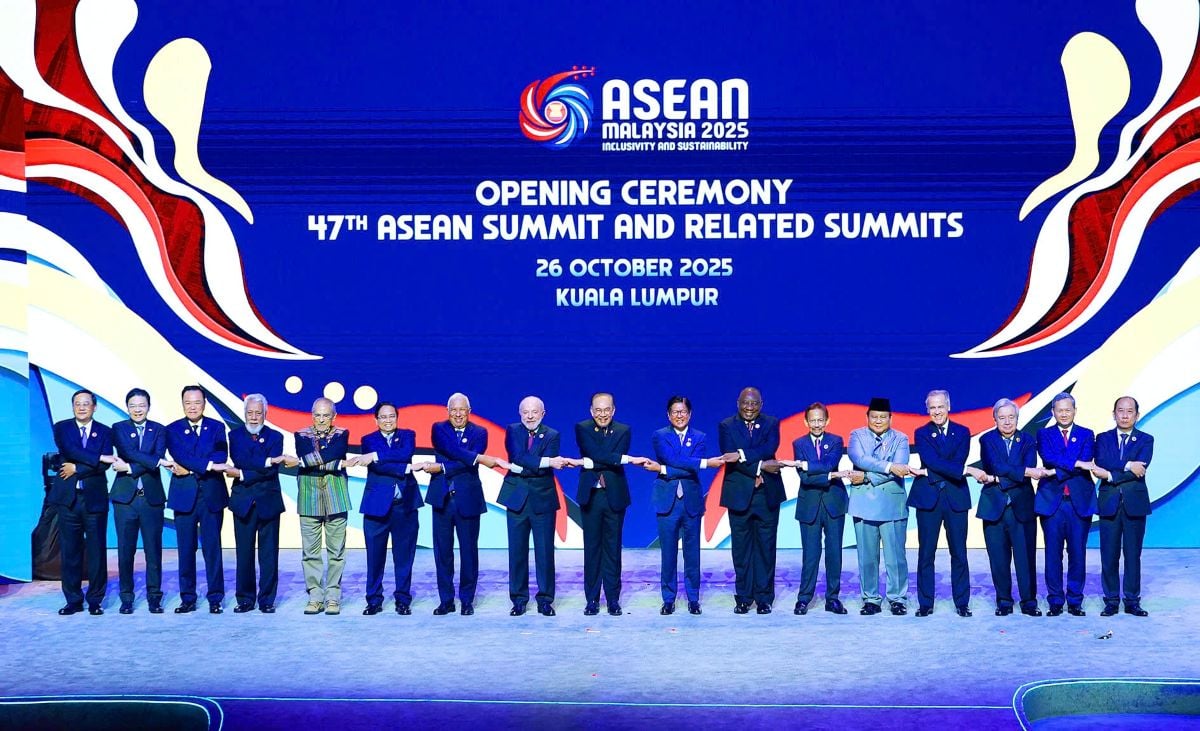
Internationally, in addition to continuing to promote the spirit of proactiveness and actively contributing to the image of a responsible and trustworthy member, Vietnam is aiming for a higher position with strong action capacity and a louder voice in the international arena. In the context of multilateral mechanisms needing reform to respond to non-traditional security issues, Vietnam has proactively proposed initiatives to participate in shaping new global and regional governance systems. Success in controlling the COVID-19 pandemic has enhanced international prestige, creating a basis for Vietnam to contribute more deeply to global and regional governance mechanisms. Globally, Vietnam participates in the United Nations peacekeeping force; successfully assumes the role of a non-permanent member of the United Nations Security Council for the 2020-2021 term despite the difficulties of the COVID-19 pandemic; proposed and got approved the initiative to take December 27 every year as the International Day for Epidemic Prevention and Control. At the regional level, Vietnam is taking on the role of ASEAN Chair 2020, leading ASEAN to overcome the COVID-19 pandemic with initiatives such as the ASEAN COVID-19 Response Fund, the ASEAN Emergency Medical Supplies Reserve, the ASEAN Comprehensive Recovery Framework, etc. The successful organization of online conferences demonstrates Vietnam's flexible leadership. These contributions are increasingly recognized and appreciated by the international community, opening up many opportunities to continue shaping Vietnam's role as a creator in the global and regional governance system.
Moreover, from the recent strong changes, Vietnamese diplomacy has created a high position and prestige, establishing Vietnam's "bamboo diplomacy" style. From the strategy of "fighting and negotiating" during the war to peaceful diplomacy in peacetime, Vietnam has always harmoniously combined firmness and flexibility. In the face of increasingly fierce strategic competition, Vietnam maintains a balanced stance, not being drawn into confrontation. "Bamboo diplomacy" represents the image and character of Vietnam for generations, resilient but flexible and proactively adapting to a changing world order.
Based on the connection between national identity and international position, the Cultural Diplomacy Strategy to 2030 proposes new measures for cultural diplomacy to build and promote the national image to catch up with domestic and foreign trends. The Strategy proposes key breakthroughs, focusing on combining diplomacy with the development and revival of national culture; developing cultural industry on the basis of digital transformation; taking people, localities and businesses as the center of the development process; at the same time, promoting the role of the overseas Vietnamese community and international students as cultural ambassadors, contributing to enhancing the spread and positioning of Vietnam's image in the international arena... The Cultural Diplomacy Strategy to 2030 needs to set out the requirement of close coordination with strategies on foreign affairs, culture, national defense, communications, education and tourism to build and promote Vietnam's image more synchronously.
Vietnam has begun to catch up with the trend of digital diplomacy - a form of diplomacy that has emerged strongly after the COVID-19 pandemic, helping to expand international connections and promote the national image. The 31st Diplomatic Conference held on December 16, 2021 emphasized the importance of digital diplomacy with its openness, visuality and ability to connect deeply with the public. Along with that, the Ministry of Information and Communications and technology enterprises have proposed many key solutions such as investing in human resource development and digital infrastructure, making decisions based on data, and promoting image promotion through digital platforms. If Vietnam promptly grasps and effectively exploits this trend, it can not only enhance the country's position and image in the digital age, but also strongly promote the digital transformation process, towards building the image of an advanced digital technology nation.
Summary of directions for building Vietnam's national image in the context of global fluctuations
Changes in thinking about building national image in the face of global trends
The transformation process of Vietnam's national image building strategy in the context of global fluctuations reflects an important change in the thinking of the Party, the State and the people. This process is shown through the main directions: image from general to specific, multidimensional; orientation from international economic integration to national cultural revival; step by step systematization of policies with a clear target approach. Specifically:
The way of expressing the national image has changed from general to more specific and multi-dimensional . Previously, the image of Vietnam was known as a "country rich in potential, with a long history and culture; developed economy, stable politics and society; friendly, peace-loving people". This approach, although comprehensive, lacks focus, making it difficult to create a clear identity in the international arena.
Since the 12th National Congress, especially after the 13th National Party Congress, Vietnam has positioned itself more specifically as a "middle-class country", "agricultural power", "digital nation". The way of conveying this image is concise, easy to imagine, creating a stronger impression on the international community. Although there are changes in the form of expression and content, the national image is consistent, based on two core pillars: long-standing national cultural values and the dynamic development of the contemporary socio-economic background.
The focus of the macro-level policy in building the national image has shifted from international economic integration to national cultural revival . Previously, the goal of building the national image was mainly associated with serving the process of "international economic integration", then expanded to comprehensive and deep "international integration" in many fields. However, since the 13th National Party Congress, the core shaping factor in building the national image has clearly shifted to promoting and reviving national culture, considering culture as one of the three pillars on par with politics and economics in the country's overall development strategy.
Vietnam is well aware that preserving and promoting national culture not only helps proactively integrate into the international community, but also enhances “soft power” and national position. In the context of fierce strategic competition as today, Vietnam needs to maintain independence and autonomy, in which the solid foundation is the value of national culture. Therefore, Vietnam must firmly integrate into the international community comprehensively and continue to integrate more deeply and widely. However, the focus of international integration today is not only the economy, but also the revival of culture as a key foundation. These two factors complement and promote each other. The above trend shows that the economic foundation is solid enough to invest more in culture.
Measures and policies are implemented more synchronously, systematically and centrally . In the previous period, national image building policies were often scattered in the fields of cultural diplomacy, multilateral diplomacy, people's diplomacy, foreign information... This reflects the integration of national image into policy fields, but due to the lack of an overall strategy, implementation is still fragmented, disjointed and uncoordinated.
Currently, the awareness of the entire Party, the entire army and the entire people about the importance of building the national image has been significantly raised, with significant improvements in systematization and strategic orientation. At the strategic level, this work is directly directed by the Party and the State, from forming thinking, viewpoints to guidelines, especially with a focus on reviving national culture. At the implementation level, building the national image is integrated into many other fields such as diplomacy, culture, agriculture, digital transformation, youth education..., being implemented creatively, in line with the trend of the times, helping the national image become more intuitive and vivid.
On that basis, promoting the work of building the national image in the era of national growth should focus on a number of contents:
Firstly, it is necessary to quantify and specifically evaluate the effectiveness of national image building policies. Currently, Vietnam mainly relies on international surveys or feedback from foreign media, lacking an internal evaluation system. In fact, the construction of periodic and annual reports and surveys will provide a scientific basis to help adjust and optimize policies.
Second, it is necessary to take advantage of important international events to promote the country's image. These are times when slogans such as "Vietnam - Safe and Friendly Destination", "Partner for Sustainable Peace" or "Fighting the epidemic like fighting the enemy", "Leaving no one behind" have created a strong international impression. Initiatives such as "Make in Vietnam" also prove that attractive images need to be accompanied by memorable slogans and clear symbols to create a better spreading effect.
Third, it is necessary to guide and orient the national spirit appropriately in the context of globalization and digitalization. The rise of national pride, especially among young people through recent commemorative events, is a welcome sign, but if not properly oriented, it can lead to extreme nationalism or xenophobia, negatively affecting the national image. Therefore, there needs to be coordination between the State, academia and the media to promote a positive national spirit, openness, international integration while still maintaining national identity.
Building a national image is a long-term process, requiring the synchronous participation of the entire political system, the whole society and each citizen. By clearly recognizing the challenges and opportunities from the deeply changing situation of the world and the country's position in that flow as well as the continuous efforts, Vietnam is qualified to create a clear and positive national image, contributing to effectively and firmly entering the era of strong national development./.
---------------------
(1) Hoa Nguyen: “Vietnam's position in the new regional situation”, Electronic Communist Magazine, December 12, 2020, https://www.tapchicongsan.org.vn/web/guest/tin-binh-luan/-/asset_publisher/DLIYi5AJyFzY/content/ vi-the-viet-nam-trong-cuc-dien-moi-cua-khu-vuc
(2) Documents of the 13th National Congress of Delegates , National Political Publishing House Truth, Hanoi, 2021, vol. I, p. 36
(3) See: Vu Le Thai Hoang, Do Thi Thuy: "A middle-sized country with a specialized diplomatic orientation: Some suggestions for Vietnam until 2030", Electronic Communist Magazine , June 25, 2021, https://www.tapchicongsan.org.vn/web/guest/the-gioi-van-de-su-kien/-/2018/823418/quoc-gia-tam-trung-voi-dinh-huong-ngoai-giao-chuyen-biet--mot-so-goi-y-cho-viet-nam-den-nam-2030.aspx
(4) Le Trung Kien: "The current world geo-economic shift and some policy implications for Vietnam", Electronic Communist Magazine , June 28, 2022, https://www.tapchicongsan.org.vn/web/guest/the-gioi-van-de-su-kien/-/2018/825529/su-chuyen-dich-dia---kinh-te-the-gioi-hien-nay-va-mot-so-ham-y-chinh-sach-doi-voi-viet-nam.aspx
(5) Bui Thanh Tuan: "Some trends of the current shift in the world economic order", Electronic Communist Magazine , February 19, 2021, https://www.tapchicongsan.org.vn/web/guest/the-gioi-van-de-su-kien/-/2018/821542/mot-so-xu-huong-chuyen-dich-trat-tu-kinh-te -the-gioi-hien-nay.aspx
(6) Hoang Minh: “Vietnam's GDP ranking in 2024 compared to ASEAN countries”, Financial Investment Magazine , February 16, 2025, https://vietnamfinance.vn/xep-hang-gdp-viet-nam-2024-so-voi-asean-va-the-gioi-d122000.html
(7) Nguyen Phu Trong: Building and developing a comprehensive and modern Vietnamese foreign affairs and diplomacy imbued with the identity of "Vietnamese bamboo" , National Political Publishing House Truth, Hanoi, 2023, p. 34
(8) Thanh Dat: "Up 10 places, Vietnam is the fastest in the world in terms of competitiveness", Government Electronic Newspaper , October 9, 2019, https://baochinhphu.vn/tang-10-bac-viet-nam-tien-nhanh-nhat-the-gioi-ve-nang-luc-canh-tranh-102262360.htm
(9) Dai Kim: "Vietnam is a bright spot for developing the National Brand", Thoi Nay Newspaper , November 25, 2024, https://nhandan.vn/viet-nam-la-diem-sang-phat-trien-thuong-hieu-quoc-gia-post846865.html
(10) Nguyen Tuan Anh: “The impact of the Fourth Industrial Revolution on the world, the region and Vietnam”, Electronic Communist Magazine , August 29, 2022, https://www.tapchicongsan.org.vn/web/guest/the-gioi-van-de-su-kien/-/2018/825809/tac-dong-cua-cuoc-cach-mang-cong-nghiep-lan-thu-tu-den-the-gioi%2C-khu-vuc-va-viet-nam.aspx
(11) Conclusion No. 76/KL/TW, dated June 4, 2020, of the Politburo, “On continuing to implement Resolution No. 33-NQ/TW of the 11th Party Central Committee on building and developing Vietnamese culture and people to meet the requirements of sustainable national development”, Communist Party of Vietnam Electronic Newspaper , June 4, 2020, https://tulieuvankien.dangcongsan.vn/he-thong-van-ban/van-ban-cua-dang/ket-luan-so-76kltw-ngay-462020-cua-bo-chinh-tri-ve-tiep-tuc-thuc-hien-nghi-quyet-so-33-nqtw-cua-ban-chap-hanh-trung-uong-6470
(12) Decision No. 749/QD-TTg, dated June 3, 2020, of the Prime Minister, approving the "National Digital Transformation Program to 2025, with a vision to 2030", Communist Party of Vietnam Electronic Newspaper , June 3, 2020, https://tulieuvankien.dangcongsan.vn/he-thong-van-ban/van-ban-quy-pham-phap-luat/quyet-dinh-so-749qd-ttg-ngay-0362020-cua-thu-tuong-chinh-phu-phe-duyet-chuong-trinh-chuyen-doi-so-quoc-gia-den-nam-2025-dinh-huong-6476
(13) Decision No. 2026/QD-TTg, dated December 2, 2021, of the Prime Minister, approving the Program for Digitizing Vietnamese Cultural Heritage for the period 2021 - 2030, Communist Party of Vietnam Electronic Newspaper , December 2, 2021, https://tulieuvankien.dangcongsan.vn/he-thong-van-ban/van-ban-quy-pham-phap-luat/quyet-dinh-so-2026qd-ttg-ngay-02122021-cua-thu-tuong-chinh-phu-phe-duyet-chuong-trinh-so-hoa-di-san-van-hoa-viet-nam-giai-doan-8078
(14) See: Documents of the 13th National Congress of Delegates, National Political Publishing House Truth, Hanoi, 2021, vol. I, p. 36
(15) Le Hoai Trung: “Multilateral diplomacy contributes to promoting integration and strengthening the country's strength,” World & Vietnam Newspaper , January 16, 2019, http://baoquocte.vn/doi-ngoai-da-phuong-gop-phan-day-manh-hoi-nhap-tang-cuong-suc-manh-dat-nuoc-85683.html
(16) Anh Tuyet: “Prospects for growth in agricultural exports”, Nhan Dan Newspaper , January 2, 2025, https://nhandan.vn/trien-vong-tang-truong-xuat-khau-nong-san-post853822.html
(17) Resolution No. 52-NQ/TW, dated September 27, 2019, of the Politburo, “On a number of guidelines and policies to proactively participate in the Fourth Industrial Revolution”, Communist Party of Vietnam Electronic Newspaper , https://tulieuvankien.dangcongsan.vn/he-thong-van-ban/van-ban-cua-dang/nghi-quyet-so-52-nqtw-ngay-2792019-cua-bo-chinh-tri-ve-mot-so-chu-truong-chinh-sach-chu-dong-tham-gia-cuoc-cach-mang-cong-5715
(18) Decision No. 1755/QD-TTg of the Prime Minister: Approving the Strategy for the development of Vietnam's cultural industries to 2020, with a vision to 2030, Government Electronic Information Portal , September 8, 2016, https://vanban.chinhphu.vn/default.aspx?pageid=27160&docid=186367
(19) Full text of the General Secretary's speech at the National Cultural Conference, Voice of Vietnam Electronic Newspaper , November 24, 2021, https://vov.vn/chinh-tri/toan-van-phat-bieu-cua-tong-bi-thu-tai-hoi-nghi-van-hoa-toan-quoc-907232.vov
(20) Full text of the General Secretary's speech at the National Cultural Conference, Voice of Vietnam Electronic Newspaper , November 24, 2021, https://vov.vn/chinh-tri/toan-van-phat-bieu-cua-tong-bi-thu-tai-hoi-nghi-van-hoa-toan-quoc-907232.vov
(21) Nguyen Trong Nghia: "Building a system of national, cultural, family values and standards for Vietnamese people", Electronic Propaganda Magazine , December 1, 2022, https://tuyengiao.vn/van-hoa-xa-hoi/xay-dung-he-gia-tri-va-chuan-muc-con-nguoi-viet-nam/xay-dung-he-gia-tri-quoc-gia-van-hoa-gia-dinh-va-chuan-muc-con-nguoi-viet-nam-142206
Source: https://tapchicongsan.org.vn/web/guest/the-gioi-van-de-su-kien/-/2018/1163002/viet-nam-tren-tien-trinh-xay-dung-hinh-anh-quoc-gia-truoc-cac-xu-the-bien-dong-toan-cau-%28ky-2%29.aspx




















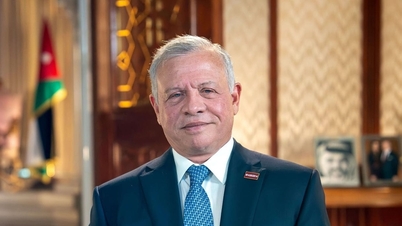


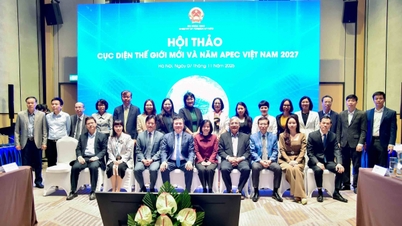





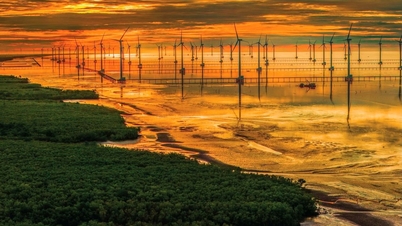

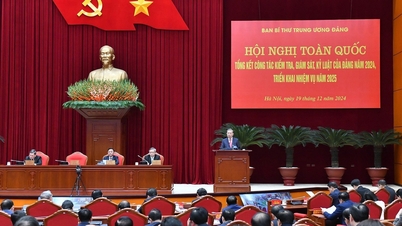

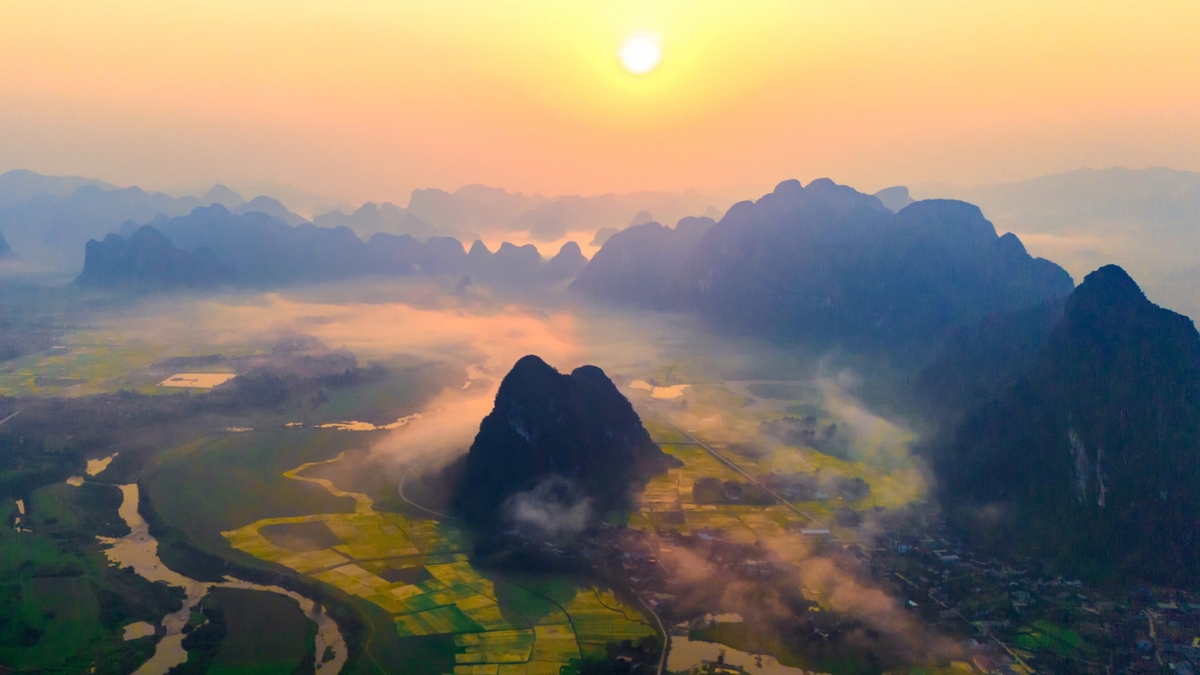









![[Video] Hue Monuments reopen to welcome visitors](https://vphoto.vietnam.vn/thumb/402x226/vietnam/resource/IMAGE/2025/11/05/1762301089171_dung01-05-43-09still013-jpg.webp)




























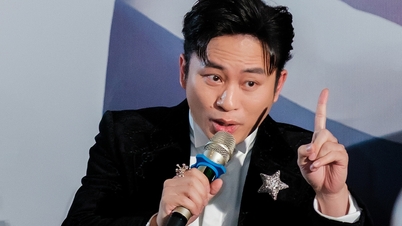













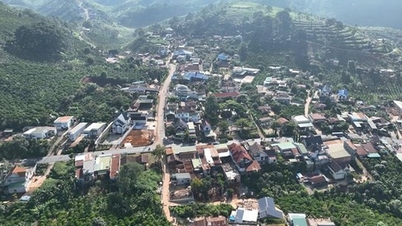




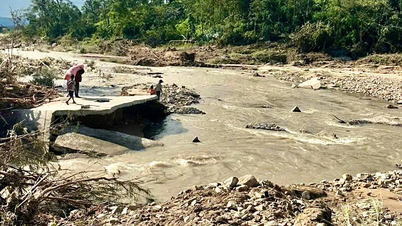



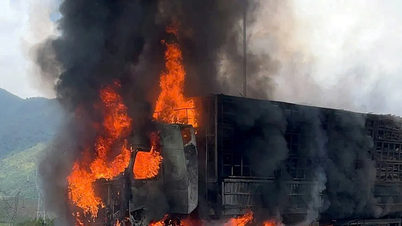
![Dong Nai OCOP transition: [Part 2] Opening new distribution channel](https://vphoto.vietnam.vn/thumb/402x226/vietnam/resource/IMAGE/2025/11/09/1762655780766_4613-anh-1_20240803100041-nongnghiep-154608.jpeg)










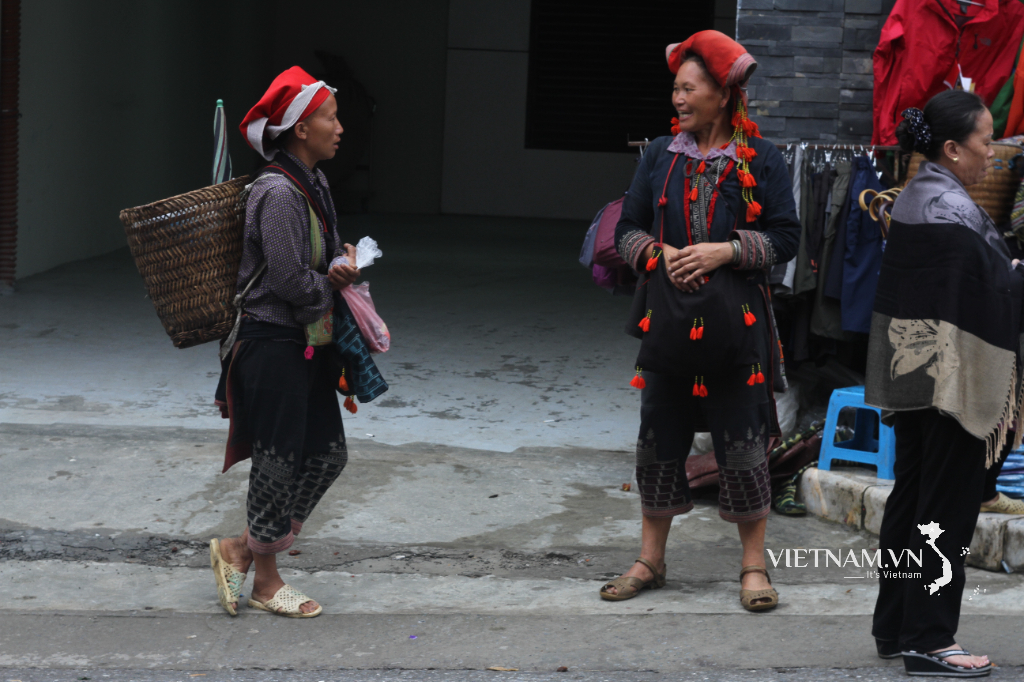


Comment (0)